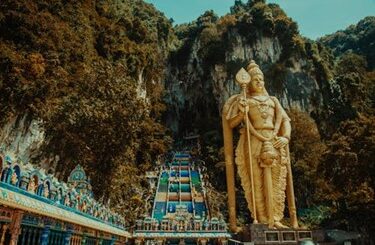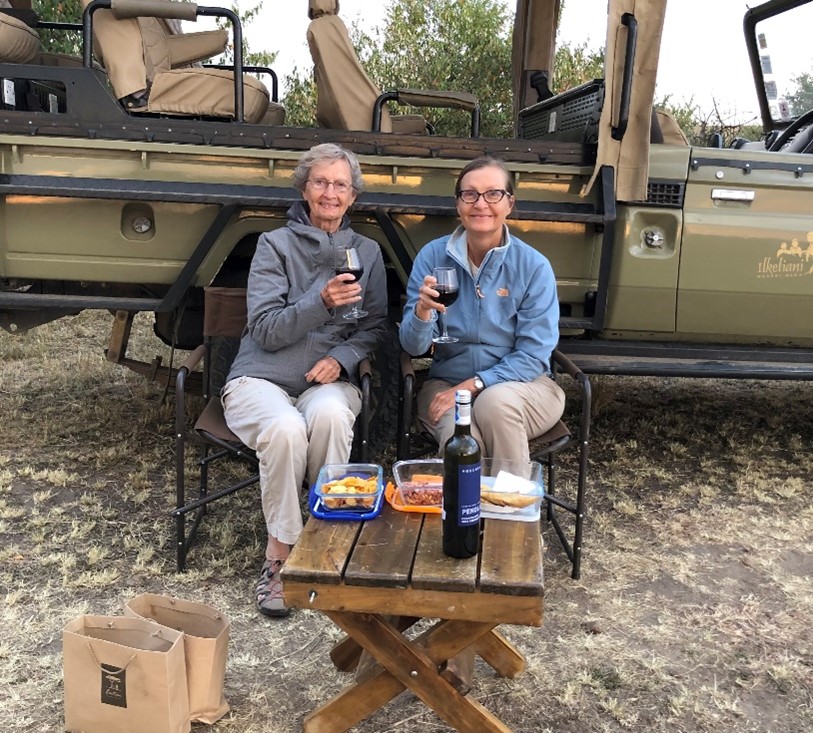Kyoto
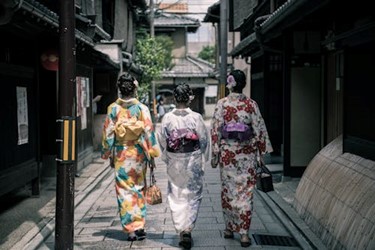
Travel Advice for Seniors: Kyoto
Kyoto summons visions of kimono-clad geishas, Buddhist temples, Shinto shrines and traditional wooden houses. You may be lucky and see a true geisha, but you can be assured of seeing a lot of tourists impersonating geishas and taking selfies at famous sites!
While Tokyo is a study in large city neon and skyscrapers, Kyoto is more of a traditional ancient city. Though still modern, it is more observant of old traditions.
We arrived Kyoto via Shinkansen or bullet train. A very fast and efficient way to travel in Japan. You don’t realize that you are going as fast as you truly are. Also, interestingly, some of the Japanese trains are painted with characters. For instance, we rode in the “Hello Kitty” train! Hello Kitty is a major cultural icon here, representing the “kawaii” (cute) aesthetic and you see it everywhere.
First up was a tour of Nijo-jo Castle, a UNESCO world-heritage site and one of the most well-known and important castles in Japan. Nijo Castle is the site where the 15th shogun, Tokugawa Yoshinobu, officially returned political power to Emperor Meiji in 1867, marking the end of the shogunate rule and the beginning of the Meiji era. The castle has accessible parking, entrance and restrooms, but some of the walkways are bumpy and some parts require transfer to a provided wheelchair. Call ahead.
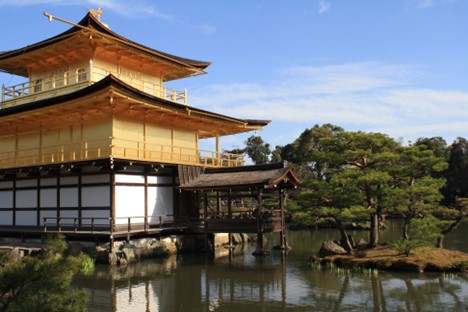
Next was a stop at Kinkaku-ji Golden Pavilion, which is absolutely a must-see. Its top two stories are actually covered in gold leaf and you can get a really nice photo of the building and its reflecting in the pond. You don’t go into the Buddhist pavilion, the attraction is the beauty of the building and the ponds and gardens around it. It’s a very peaceful stroll of overwhelming beauty, even with the crowds during cherry blossom season! The Pavilion has accessible parking, entrance, restrooms and pathways with some wheelchairs for rent, although some of the pathways are rough and only part of the garden is accessible.
We statyed at Wajum Kaikan Ryokan. A word on ryokans…ryokans are a uniquely Japanese experience. They are a traditional inn that features either western style beds or futons. Note here: Be sure you know which type of bedding you will be sleeping on! We stayed on traditional futons, which were a bit hard, but the trick is getting up/down from the futon. Also, some ryokans will have communal baths or onsens, do not miss this treat! An onsen is a warmed spring water bath that is communal, usually with a men’s and women’s separate. You will need to strip completely and take a shower with soap before entering and exiting. It is seen as more of a community bath with conversation and a relaxing soak. The Japanese may give you a look because you are a foreigner, but don’t let this deter you from enjoying the experience, with usually a lot of other foreigners, none of whom care what you look like without clothes!
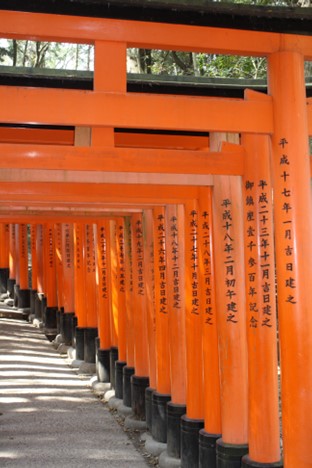
Next day was a train out to Fushimi and the Inari Shrine. The bright orange torii gates here are one of the most photographed in Japan. The Shinto shrine is dedicated to Inari, the deity of a good rice harvest and success in business. It’s a slow walk uphill of about 1.5-2 hours. But you should go slowly anyway to take pictures and to appreciate the beauty of the torii gates and the park. The significance of the torii gates is that they provide a division between life on earth and the sacred. It is thought that the Kami (spirits) travel through these gates and that they are built to welcome them. This is one of the most touristed and important shrines in Japan and even though the walk is uphill, you will not be sorry that you made the trip to see such an incredible sight.The lower part of the Shrine is somewhat accessible with ramps, walkways and restrooms, the rest of it is not.
Our afternoon included a visit to the Higashiyama district, featuring a number of UNESCO World Heritage temples and the most pristine of Kyoto’s old townscapes. The area is also home to several of the city’s kagai, or geisha districts. Be aware that it is very hilly and the hills are a bit steep here. We stopped for a visit at the Yasaka, or Gion Shrine, a landmark of the Gion area and home to the Gion Matsuri, one of Japan’s most renowned festivals.
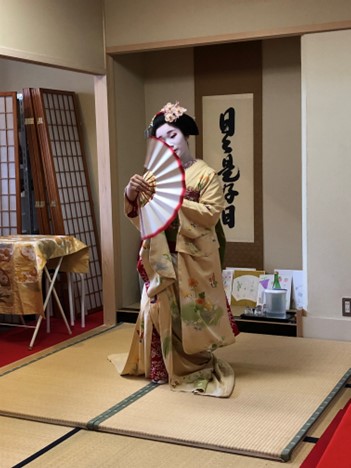
Gion is famous for its kabuki and for its geishas. It is very crowded with tourists clamoring for a sightline inside one of the famous houses or for a sight of a geisha. We actually did see a geisha in full beautiful dress out shopping. It was entertaining to hear the geisha stories and to stroll though the famous area. Part of our tour included “Meet a Maiko”, which is a Geisha-in-training, so to speak. The fully made-up and costumed Maiko performed some dancing (her specialty) and making tea. It was fascinating to watch her delicate and intentional motions and she was available for photos and for answering questions.
Dinner was another Japanese specialty, shabu-shabu. It is sort of a Japanese version of hot pot with thinly sliced meats and vegetables cooked in broth and dipping sauces. Yum!
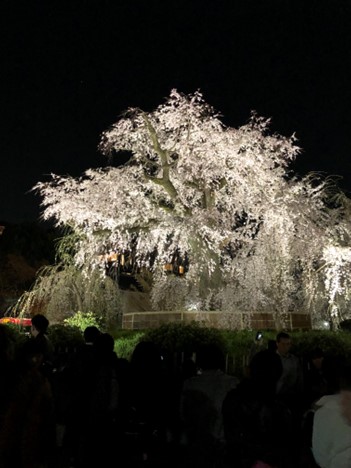
Though Kyoto was crowded with tourists and mostly Japanese from out of town, it was still a magical place to visit. You can feel the “oldness” and history of the place if you take a minute. We also stayed at a location near Yasaka Shrine and very near one of the oldest and most magnificent cherry trees in Kyoto. We ventured out at night to join the festivities and get a view of the tree lit up with lights. It was quite a sight!
Where we stayed: Wajum Kaikan Ryokan. Breakfast included. Very nice ryokan, convenient location.
How we got there:Express Train and Shnkansen (bullet train) from Takayama to Kyoto.This was part of a three-week small group tour through Japan, starting in Toyko, traveling south to Hiroshima and then back to the north island and ending in a loop back in Tokyo.
General Accessibility Information: See notes above. Japan is pretty accessible. Major attractions have accessibility features and most new buildings and hotels are accessible. Much transportation is also accessible. See Accessible Japan for specifics. Call in advance to verify and make specialty arrangements.See our sections on specialty apps and accessible travel for more on accessibility assistance.



